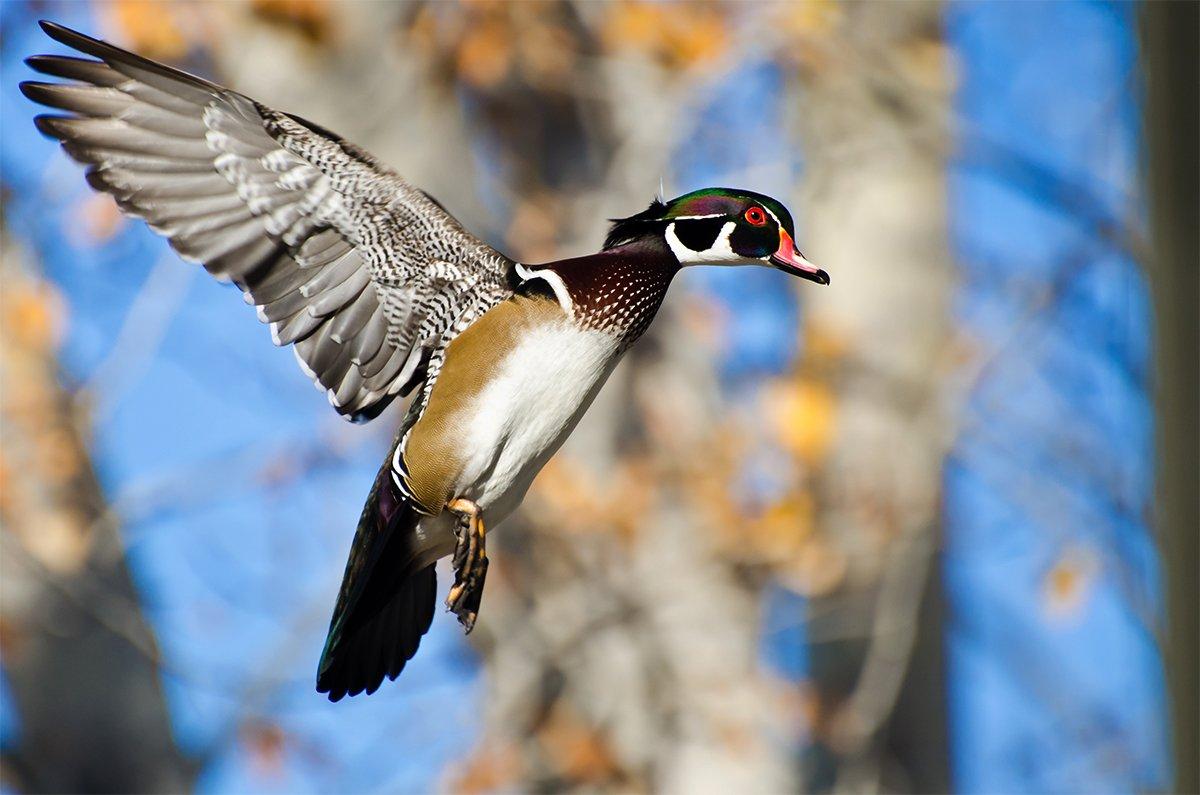Limits are Great, But They Don't Always Rule the Day
The flow takes you at first. Unaccustomed to walking with fairly swift current at your heels, you stumble at bit and test the bottom before trusting your balance. But soon, with your stream legs underneath, you gain confidence and begin concentrating on stealth.
Go with the river, you think. No faster, no slower. And no noise.
Noise is the big sin, of course, as that will alert wood ducks to your presence far downstream. They'll see you, too, but usually only on long, straight stretches that offer no cover. Otherwise, you can easily crouch behind tall streamside grass or slip along thick willows before springing the trap around sharp bends or small bayous.
That's pretty intuitive stuff after you walk a bit; all part of a morning on the creek. But other concerns demand your attention, too. Geese moan overhead on their way to loaf, and you wonder where they were feeding. Woodpeckers dart here and there along the old willows that line the stream. Now and then, you'll catch a big buck bedded in the marsh or startle a family flock of turkeys munching on acorns. Once, you even shot a pheasant. That'll never happen again, but it was a fun surprise.
OK, concentration time, now. You approach a series of back-and-forth bends that form deep pools with thick overhead cover — perfect woodie hangouts. A misstep will blow the surprise, but a careful, calculated approach might net you a shot. You just never know until you round the curve.
A drake flushes far downstream, followed by another. Hmm. Maybe it'll find another little hole to its liking and tuck in there, possibly giving you another chance. Or maybe not. Sometimes, they just evacuate. These birds have been harassed for a couple of weeks now, and the survivors are pretty good at avoiding hunters.
Your focus still sharp, you slip along a long inside bend and scan the shoreline ahead. Wait — there, a drake and a hen. They flush as you mount your gun, the drake in the lead. The first shot brings him down hard, and a follow-up round at the hen misses. You consider trying a third but notice that the drake has popped its head up. No double today. Round No. 3 must dispatch the wounded bird.
No worries. You hustle downstream, almost tripping as you go, hoping the bird doesn't get caught in the current and disappear. There he is; dead along the shoreline grass. Success. And although one drake wood duck represents a good day, you still have a few hundred yards to traverse. Surely, your next two woodrows are hiding somewhere along that course.
Yet 30 minutes and several prime-looking spots later, no other ducks have offered a shot. Now, stubbornness becomes your enemy. You want to keep hunting, but unless you want to trudge back along the county highway, it's time to turn around and struggle against the current on your way to the truck.
Splashing upstream requires a bit of time and effort, but at least you don't have to worry about being quiet. It'd be impossible, anyway. Further, the trek lets you savor the day and take in some fall color — blaze-red maples and bright yellow ash — you missed while in hunting mode during the downstream journey. Finally, the truck appears, and the long walk ends. Whew. No need to worry about jogging today. Time to head home.
But as the drive begins, you gaze at other sections of the stream and wonder what treasures might be hidden there. You canoed that arm once and shot two woodies. And you've seen ducks fly along that little backwater, too. Maybe you have enough time and energy for another walk before quitting.
Perhaps. But as your cheeks still sting from the cool north wind, getting another duck or two suddenly doesn't seem that important. Gordon MacQuarrie's Mr. President once told his younger study that a brace apiece was enough for the day. With much of the season ahead and images of the autumn stream in your mind, you figure one wood duck is OK, too.
Click here for more Realtree waterfowl hunting content. And check us out on Facebook.








